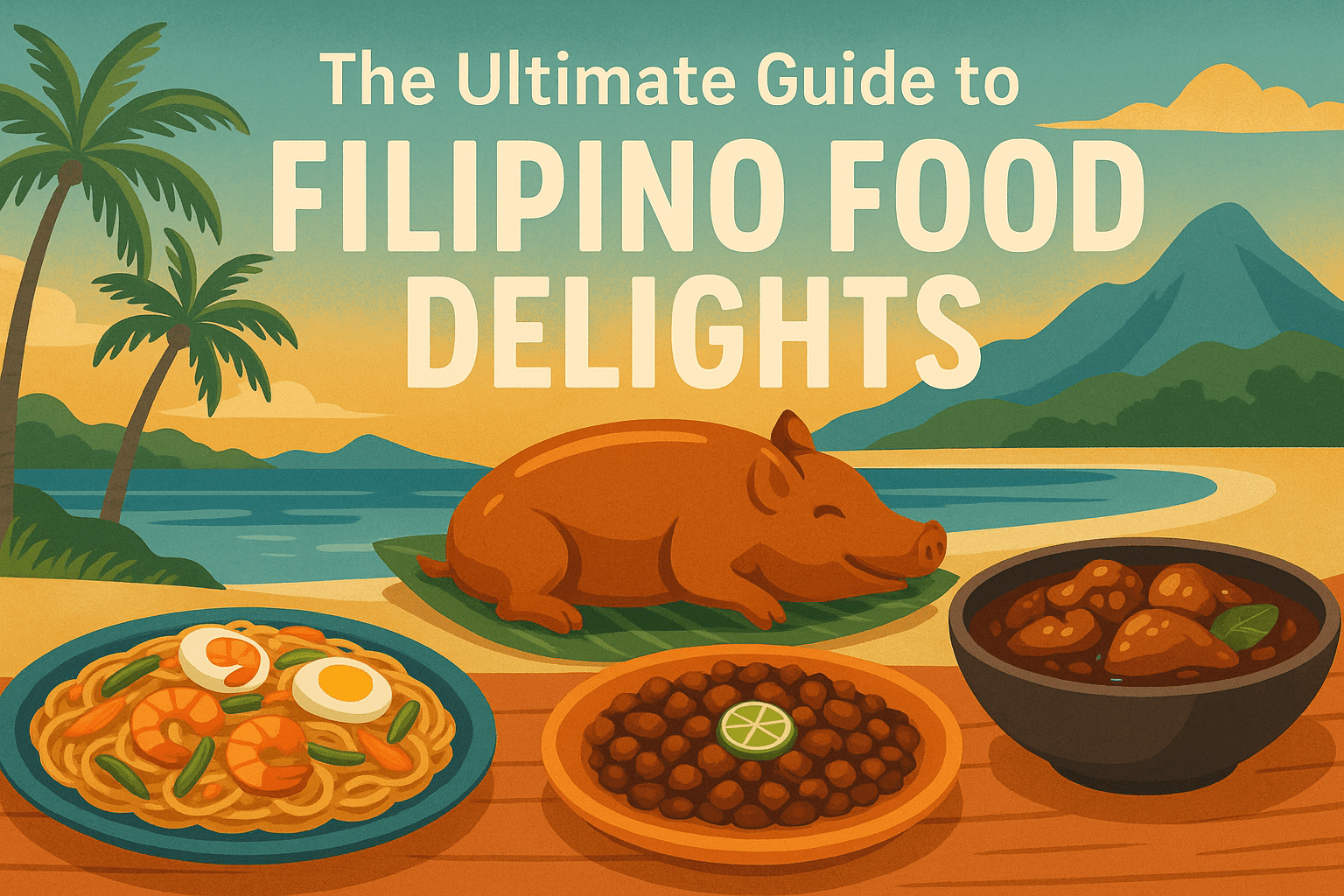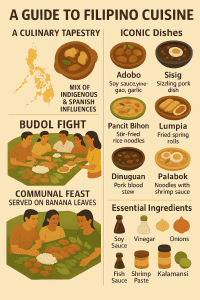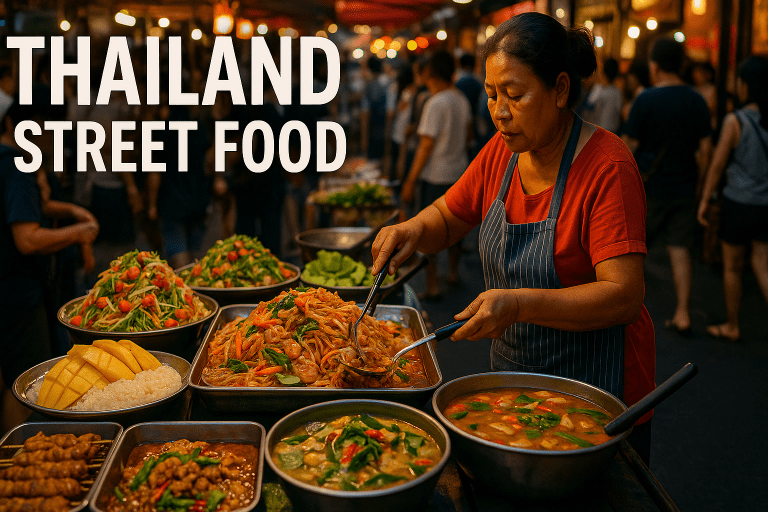
Embark on a flavorful journey through the archipelago with this ultimate guide to Filipino food delights. From the bustling streets of Manila to the serene beaches of Palawan, Philippine cuisine offers a rich tapestry of tastes and textures waiting to be explored.
Get ready to discover the culinary treasures that make this Southeast Asian nation a foodie’s paradise.
A Culinary Tapestry Woven with History
Filipino cuisine is more than just a collection of dishes; it’s a reflection of the country’s diverse history and cultural influences. Indigenous traditions blend seamlessly with Malay, Chinese, Spanish, and American flavors, creating a unique and captivating culinary landscape. Understanding this historical context is key to appreciating the depth and complexity of Filipino food delights.
The Spanish colonization, spanning over 300 years, left an indelible mark on Filipino gastronomy. Many iconic dishes, such as adobo, paella (adapted into arroz valenciana), and leche flan, trace their origins to Spain. The use of sofrito, a base of onions, garlic, and tomatoes, is another prominent Spanish influence that continues to shape the flavor profiles of countless Filipino dishes.
However, it’s crucial to recognize that Filipino food is not merely a derivative of Spanish cuisine. The Filipinos skillfully adapted and indigenized these foreign influences, incorporating local ingredients and techniques to create dishes that are distinctly their own. Consider the use of kalamansi (Philippine lime) or patis (fish sauce) – these are distinctly Filipino ingredients that add a unique twist to familiar Spanish recipes.
Iconic Filipino Dishes: A Symphony of Flavors and Textures
Let’s delve into some of the most beloved and representative dishes that showcase the essence of Filipino food delights:
- Adobo: Often considered the national dish of the Philippines, adobo is a flavorful stew typically made with chicken or pork braised in soy sauce, vinegar, garlic, peppercorns, and bay leaves. The vinegar acts as a preservative, reflecting traditional cooking methods. Different regions offer variations, such as adobo sa gata (cooked in coconut milk).
- Lechon: This dish is a whole roasted pig, traditionally cooked over charcoal. The skin becomes incredibly crispy and golden brown, while the meat remains juicy and tender. Lechon is a centerpiece at Filipino celebrations and gatherings. The method in which it is prepared can be traced back to the Spanish.
- Sisig: Originating from Pampanga, sisig is a sizzling dish made from chopped pig’s face (snout, ears, and cheeks) seasoned with onions, chili peppers, and kalamansi. It is often served on a hot plate, topped with a raw egg. Its crunchy, savory, and slightly tangy profile makes it a popular bar snack and appetizer.
- Bicol Express: Hailing from the Bicol region, known for its love of chili peppers, Bicol Express is a creamy and spicy stew made with pork, shrimp paste (bagoong), coconut milk, and plenty of chilies. The combination of rich coconut milk and fiery chilies creates a unique and addictive flavor profile.
- Pancit Bihon: This noodle dish features thin rice noodles (bihon) stir-fried with vegetables, meat (often chicken or pork), and shrimp. Soy sauce and calamansi are typically used as seasonings. Pancit bihon is a staple at Filipino parties and gatherings, often symbolizing long life.
- Lumpia: These are Filipino spring rolls, similar to those found in other Asian cuisines. They are typically filled with a mixture of ground pork, vegetables, and spices, then deep-fried until golden brown and crispy. Lumpia are often served with a sweet and sour dipping sauce.
- Dinuguan: This savory stew is made with pork and simmered in pig’s blood, vinegar, garlic, onions, and chili peppers. While the idea of eating blood stew might seem intimidating to some, dinuguan is a surprisingly rich and flavorful dish.
- Palabok: A noodle dish featuring thick rice noodles topped with a rich shrimp-based sauce, crushed pork cracklings (chicharon), shrimp, hard-boiled eggs, and green onions. The combination of textures and flavors makes it a truly satisfying dish.
The Budol Fight: A Communal Feast
Beyond individual dishes, the concept of “budol fight” offers a unique glimpse into Filipino culture. A budol fight is a military style of eating where food is piled high on banana leaves, and diners eat with their hands, fostering a sense of communal feasting and camaraderie.
Typically, this includes grilled seafood, meats, rice, and various side dishes. It’s more than just a meal; it’s an experience that celebrates togetherness and the abundance of food.
This way of eating is common in the Philippines and involves a lot of rice, grilled meats, and seafood and is an adventure of textures, tastes, and smells. You can even find this type of food at restaurants.
Essential Filipino Ingredients: Building Blocks of Flavor

To truly understand Filipino food, it’s essential to familiarize yourself with some of the key ingredients that form the foundation of the cuisine:
- Soy Sauce (Toyo): A staple seasoning, providing umami and salty notes to many dishes.
- Vinegar (Suka): Used extensively for its sour and tangy flavor, as well as its preservative properties.
- Garlic (Bawang): An indispensable ingredient, adding aromatic and pungent flavor to almost every dish.
- Onions (Sibuyas): Another essential aromatic, providing sweetness and depth of flavor.
- Fish Sauce (Patis): A fermented fish sauce, used to add umami and salty flavor.
- Shrimp Paste (Bagoong): A fermented shrimp paste, used to add a pungent and savory flavor, particularly in dishes from the Bicol region.
- Kalamansi: A small, round citrus fruit, similar to lime, used to add a tangy and refreshing flavor.
Addressing Concerns: Health and Authenticity
Some tourists express concerns about Filipino food being perceived as “unhealthy,” often citing the use of pork, deep-frying, and high sodium content. While it’s true that some Filipino dishes are rich and indulgent, it’s important to remember that the cuisine is incredibly diverse. Many dishes feature fresh vegetables, seafood, and lean meats. For instance, kinilaw, a Filipino ceviche, uses fresh fish marinated in vinegar and spices. Sinigang, a sour and savory soup, is loaded with vegetables and tamarind broth. Furthermore, many Filipino families are increasingly health-conscious and adapt traditional recipes to be lighter and more nutritious.
Moreover, like any cuisine, the quality of ingredients and cooking techniques can significantly impact the healthfulness of the food. Opting for fresh, locally sourced ingredients and preparing dishes at home allows for greater control over sodium content and cooking methods. The best way to have Filipino food delights is to learn how to cook them yourself!
Finding authentic Filipino food outside of the Philippines can be a challenge. Seek out restaurants run by Filipino families or chefs who are passionate about preserving the traditions of their cuisine. Don’t be afraid to ask questions about the ingredients and cooking methods to ensure you’re getting a genuine experience.
I recall my first attempt at making adobo. I meticulously followed a recipe I found online, but it lacked that certain *something*. It wasn’t until I spoke with a Filipino friend that I realized the secret ingredient: patience. Letting the meat marinate overnight made all the difference.
The use of quality ingredients can also have a huge impact on the taste of the food, especially when using fresh products, such as fish, meat, or vegetables. Many cooks even raise their own livestock for quality control!
Food expert Anthony Bourdain once said,
This is exactly the sentiment and essence of Filipino food delights. This extends far beyond just the Philippines, and is a sentiment that can be applied globally. One of the best ways to learn about a culture is through the food!
Exploring Regional Variations
The Philippines is an archipelago composed of thousands of islands, each with its own unique culinary traditions. Exploring these regional variations is an essential part of appreciating the diversity of Filipino food delights.
In the northern region of Ilocos, you’ll find dishes like pinakbet, a vegetable stew flavored with shrimp paste, and bagnet, crispy deep-fried pork belly. The Central Luzon region, known as the “Rice Granary of the Philippines,” boasts dishes like kare-kare, a rich stew made with oxtail and peanut sauce. And as previously mentioned, the Bicol region is famous for its spicy dishes like Bicol Express, due to the abundant use of chili peppers.
There are also many influences from American culture, especially when it comes to snacks, and some foods have been altered to fit the culture of the Filipino people.
Understanding the regional nuances of Filipino cuisine allows for a deeper appreciation of the country’s cultural diversity. Each region brings its own unique ingredients, cooking techniques, and flavor profiles to the table, contributing to the rich tapestry of Filipino food delights.
And with that, we can learn more about the food through travel, such as the traditions in hello world and experiencing the world together.
Conclusion: A Culinary Journey Awaits
Filipino food delights offer a captivating blend of flavors, textures, and cultural influences. From the savory richness of adobo to the communal spirit of the budol fight, Philippine cuisine is a culinary adventure waiting to be explored.
By embracing the history, understanding the ingredients, and appreciating the regional variations, you can embark on a truly rewarding gastronomic journey.
So, open your mind, tantalize your taste buds, and discover the magic of Filipino cuisine.



